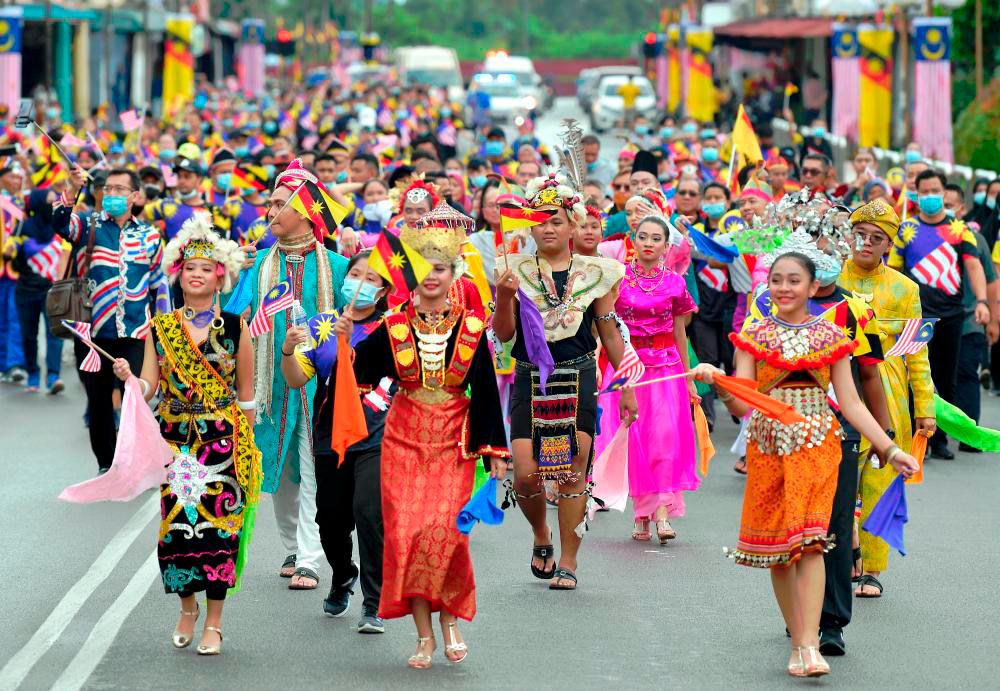WHEN I was growing up in the 80s and 90s, I used to hear the greeting “Kung Hei Fat Choi” being exchanged among my Chinese neighbours during the Lunar New Year.
In my ignorance, I had always assumed that the term meant something similar to “Happy New Year” or in the same vein as the greetings “Selamat Hari Raya”, “Merry Christmas”, and “Happy Deepavali”, which are exchanged during the corresponding festivities.
Towards the end of the 90s and the start of 2000s, the words “Kung Hei Fat Choi” became more ubiquitous, and again, in my limited Mandarin, thought that this was the modern way of wishing “Happy Chinese New Year”.
The world at the time was a changing landscape on numerous fronts, including the internet being useful, thanks to Google; and the fact that “Apple” was no longer just the name of a fruit; and we can now create a sheep solely with its mother’s cells. So, I assumed “Gong Xi Fa Cai” was a modern way of wishing “Kung Hei Fat Choi”, but I was wrong.
Although “Kong Hey Fat Choy” and “Gong Xi Fa Cai” mean the same thing, it has nothing to do with modernisation. The former is in Cantonese, and the latter in Mandarin. And the literal meaning is not even close to “Happy New Year”, but it means “Congratulations and may you be prosperous”. And to my surprise, I recently found out that “Gong Xi Fa Cai” is better used together with another expression: “Xin Nian Kuai Le”, which means “New Year Happiness”.
I am disappointed with myself for not knowing this. Living in a multicultural society since birth, having Chinese and Indian friends at school, I thought I knew enough about their culture to live harmoniously and work together to build a better future for our country. But to my dismay, I did not even understand the commonly uttered celebratory expression during the Lunar New Year.
Perhaps, tolerance alone is not enough to flourish in a multicultural society like ours.
The Mughal Empire, which existed in India from the 16th to the 19th century, was a diverse and multicultural society. The empire was ruled by Muslim emperors but the population was made up of a mix of Hindus, Muslims and other groups, such as Sikhs, Jains and Buddhists.
The Mughals were known for their tolerance of different cultures and religions, and made efforts to incorporate elements of different cultures into their own. The courts were cosmopolitan, with people from different backgrounds and cultures serving in important positions. They also allowed different religious communities to practise their faith and live according to their own customs.
However, it is important to note that the Mughal Empire was not perfect and there were instances of religious and cultural discrimination. For example, Hindus were sometimes viewed as second-class citizens and there were restrictions placed on their religious practices. In some cases, the emperors imposed taxes on non-Muslims. While the Mughals made efforts to be and tolerant, there were religious and cultural discrimination.
And this is where understanding is important. Understanding and respecting each other’s cultures and backgrounds is an important step towards creating a harmonious multicultural society. When people understand and appreciate the diversity around them, it can lead to greater acceptance and less mistrust between different races. Efforts must be made to promote cultural understanding through education, such as incorporating history and culture of different races into the curriculum, so that students can learn and appreciate the various cultures.
Interactions and exchange programmes can also help build understanding. Having leaders and politicians who represent different races and actively promote diversity and inclusiveness is also important for a harmonious society.
It is pertinent to note that tolerance alone is not enough to ensure a harmonious multicultural society, but it is a necessary ingredient. Tolerance means that people accept and respect different cultures and beliefs even if they do not agree with them. A society that is truly inclusive requires both tolerance and understanding of different cultures.
To all my Chinese friends and acquaintances, “Gong Xi Fa Cai”.
Assoc Prof Dr Nahrizul Adib Kadri
Director of Corporate Communications Centre, Universiti Malaya









